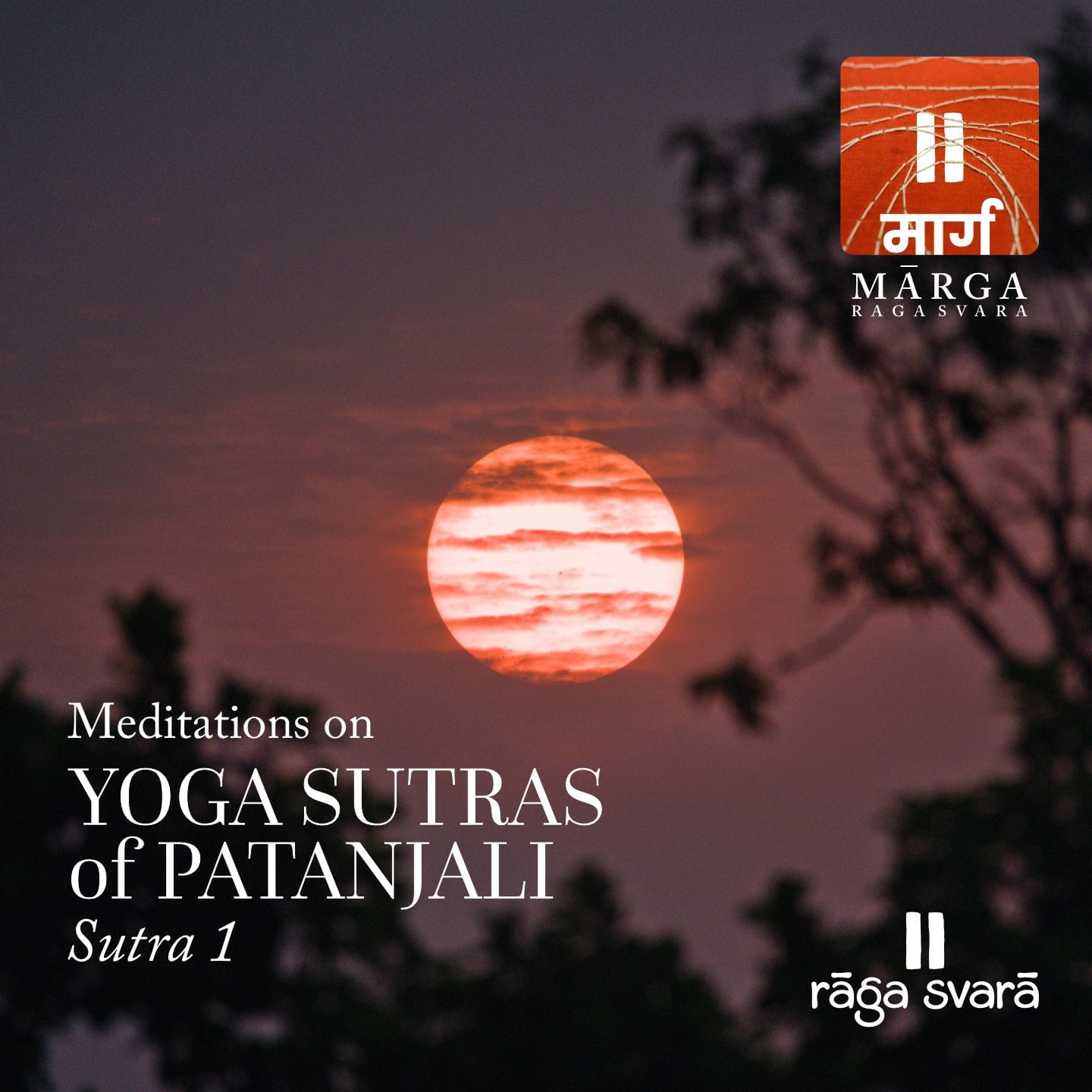Yoga Sutras - 1st Sutra

by Mohit Khodidas |
I believe that seminal texts should be read from primary sources with or without secondary texts serving as valuable guides and commentaries. For texts like Yoga Sutras of Patanjali, there is an additional issue of selecting the translation. Many works by great scholars exist. For Raga Marga study and discussion, we are using Patajali's Yoga Sutras with the commentary of Vyāsa and gloss of Vācaspati Miśra. We are using two texts: one is an English translation and another a Hindi translation. The English text is by Edwin Bryant (EB) and the Hindi text is by Hariskrishnadas Goyandka (HG).
Here, I am sharing my thoughts in the sutras that have interested me the most, or perhaps better to say, sutras that I understand a bit more than others. This is far from any scholarly analysis. I simply present my stream of thoughts as I meditate on the sutras.
Meditations on the Sutras
The Yoga Sūtras is primarily a manual for the practitioner rather than an exposition of Yoga philosophy.
While the text is full of metaphysical concepts, it must still be thought of as a guide to practice. Practice of what, one may ask. The practice of Yoga in its full and total form. Even for practice, as we see in the text, one must have a foundational understanding of the darshan (philosophical) system. This system is complex, with concepts that are difficult to translate.
Yoga Sutras of Patanjali has been commented on by Vyāsa with further commentary and gloss by Vācaspati Miśra. And many other commentaries on commentaries.
My goal (or rather the process) here is to undertake a shared interpretation and understanding of texts. Inspired by the hermeneutical tradition of Hans-Georg Gadamer, we look at source texts along with relevant commentaries (bhāṣyas).
It is also standard in the commentarial literature, as will become apparent throughout this work, for the later commentators to analyze each word in every sūtra (as discussed in the introduction, sūtra means aphorism or extremely succinct verse), and words are analyzed in various ways—etymologically, semantically, contextually, philosophically, etc. Commentaries thus unpack the meaning of words, both individually and collectively, in the sūtras of primary texts. Vyāsa, Vācaspati Miśra, Vijñānabhikṣu, Saṅkara, Bhoja Rāja, Rāmānanda Sarasvatī, and Hariharānanda Araṇya are, in chronological order, the main commentators recognized as the most important of the premodern period and their interpretations form the basis of the present commentary.
-EB
I will focus only on chapter 1 - samādhi-pādaḥ
॥ प्रथमोऽध्यायः ॥
॥ समाधि-पादः ॥
अथ योगानुशासनम् ॥ १.१ ॥
atha yogānuśāsanam || 1.1 ||
Now, the teachings of yoga [are presented].
The terseness and straightforward presentation of words is a jolt in the beginning. The matter-of-fact presentation continues throughout the text.
I prefer to sound out the sutra before trying to understand the translation. I can read Sanskrit with the pace of a snail, and my understanding is rudimentary at best. The forcefulness of the sound of 'atha' makes the first sutra sound like a command more than an entreaty.
...the ultimate subject matter of the Yoga Sūtras is Samādhi.
Samādhi consists of various contemplative stages of mental
concentration that will be described in detail throughout the text.
-EB
The word Yoga has two etymologies. One, perhaps the more popular, is that it come from the work Yuj, which means to join, to yoke (common Indo-European etymological ancestry). Whereas the other root means to contemplate. I believe the second one is the more appropriate one here. Yoga is contemplation more than anything else.
Just as in most religious systems the body is commonly accepted to be extraneous to and separable from some notion of a soul or life force, and discarded at death, so (in contrast to certain major strains of Western thought), according to the Yoga system (and Hindu thought in general), the mind is also held to be extraneous to and separable from the soul (although it is discarded not at death but only upon attaining liberation). The soul is enveloped in two external and separable bodies in Yoga metaphysics:21 the gross material body consisting of the senses, and the subtle body consisting of the mind, intellect, ego, and other subtle aspects of the persona.
-EB
These are the sthūla-śarīra and sūkṣma-śarīra.

